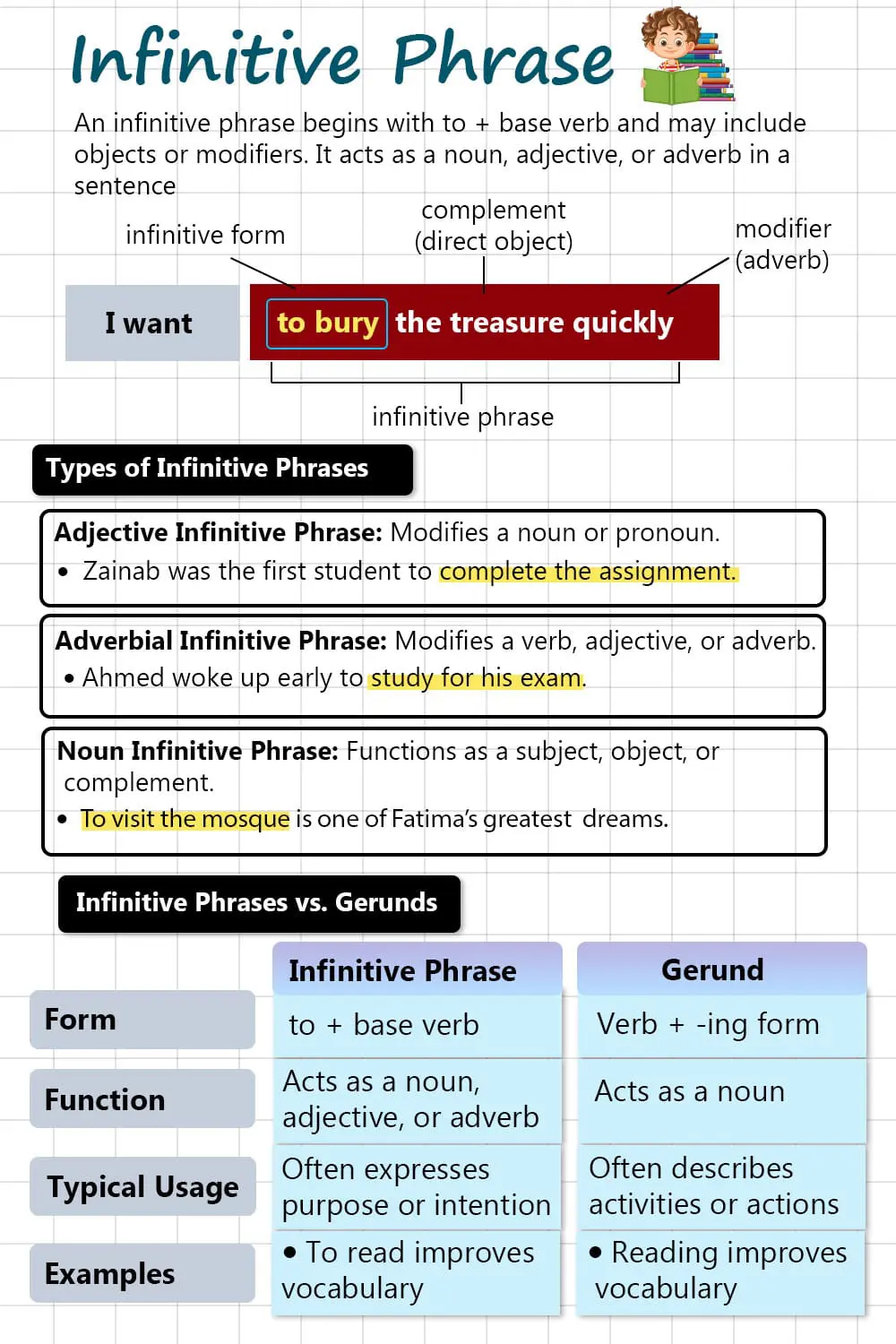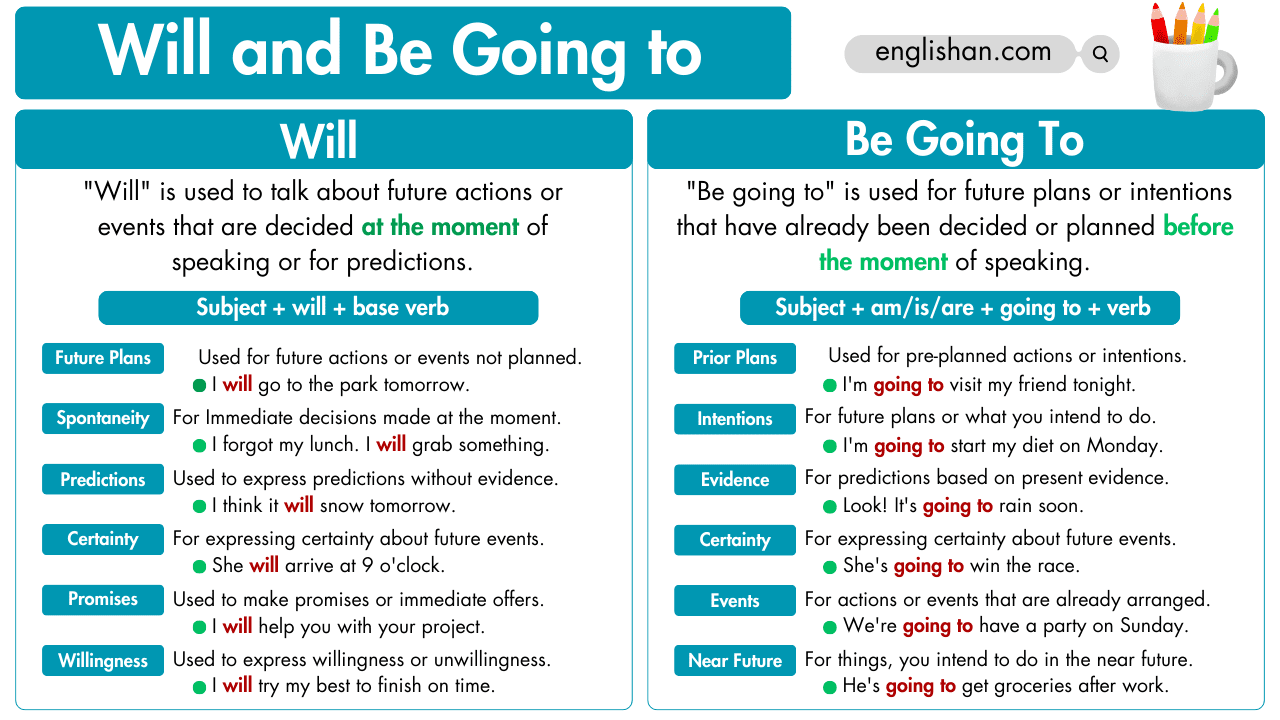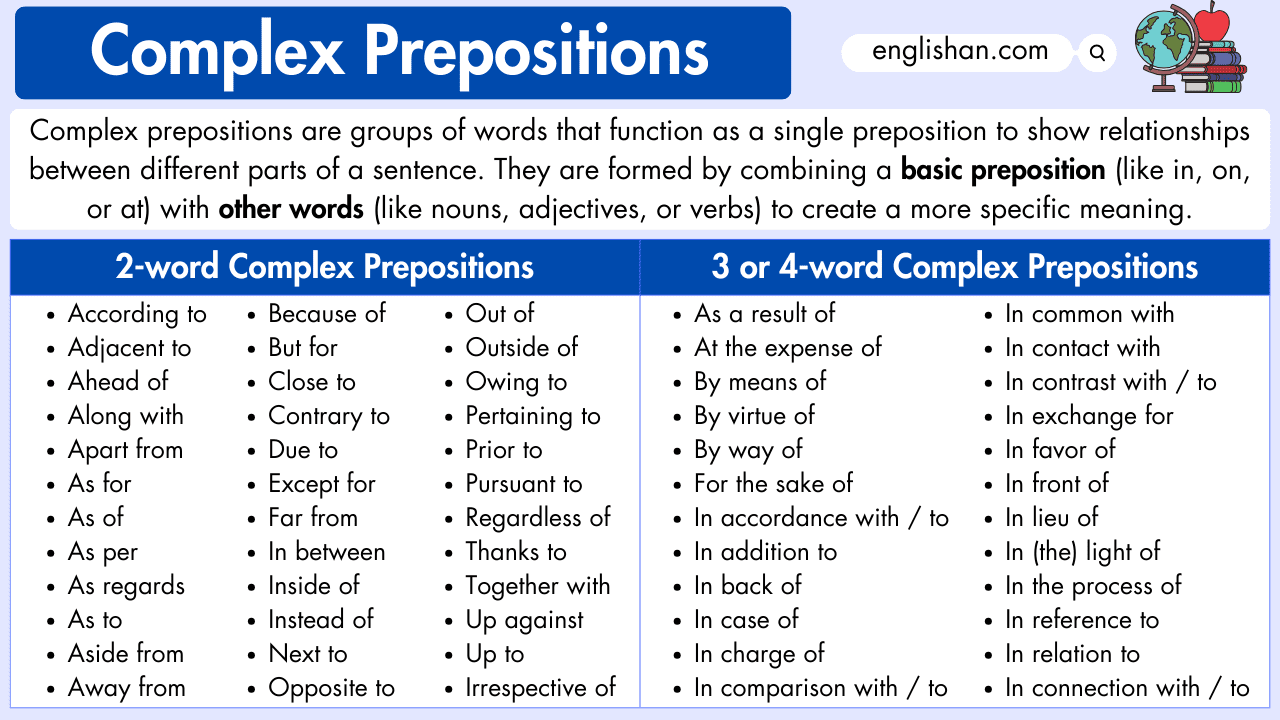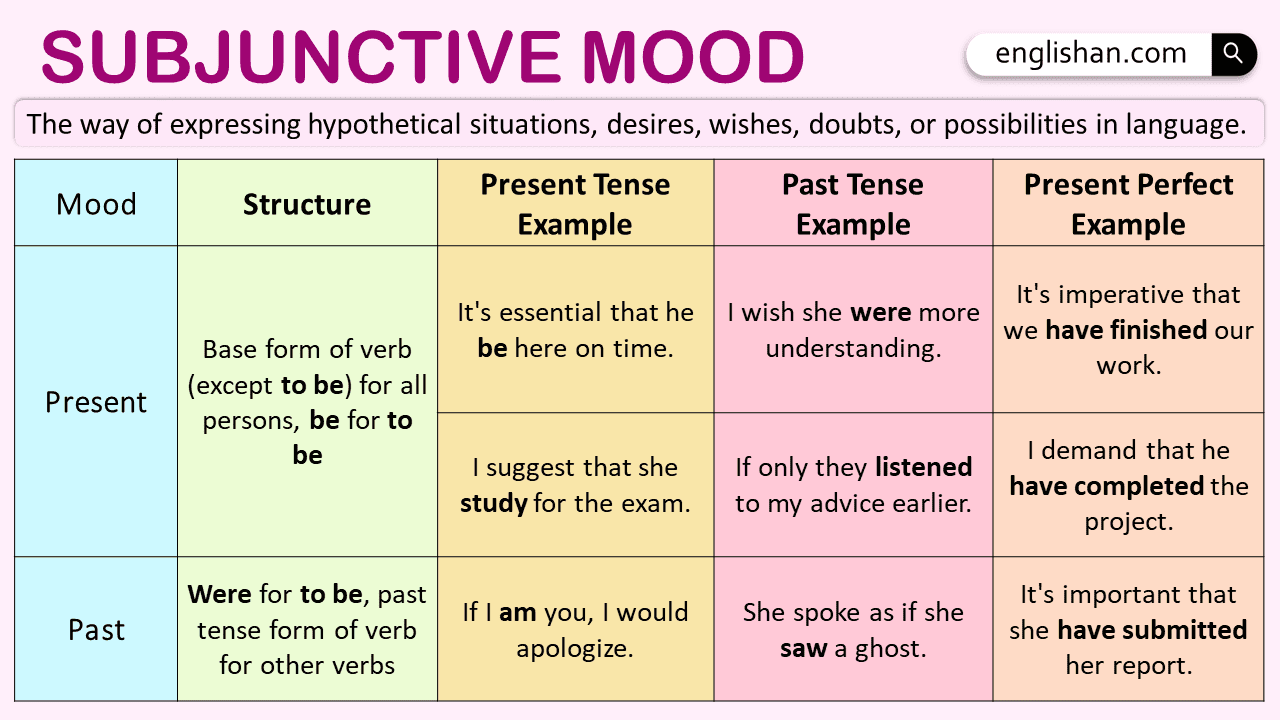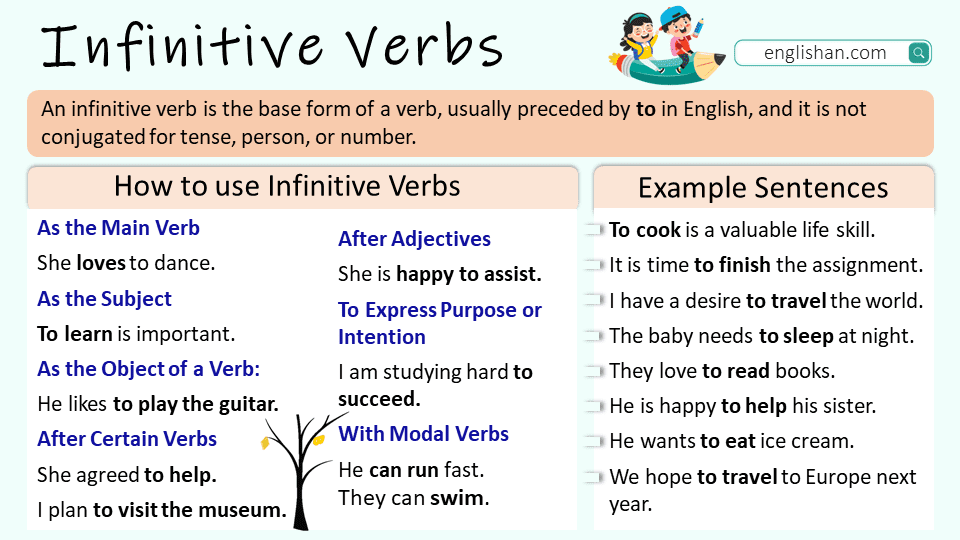Contents
An infinitive phrase in English is a group of words that begins with an infinitive (the base form of a verb, usually preceded by “to”) and may include complements or modifiers. Infinitive phrases are essential to understand in English grammar, as they play various roles in sentences, including acting as nouns, adjectives, and adverbs.
What is an Infinitive Phrase?
An infinitive phrase is a phrase that begins with an infinitive form of a verb—typically “to” followed by a base verb—and includes any objects or modifiers. Infinitive phrases add clarity and depth to writing by acting as a key part of the sentence’s structure, whether by expressing an action, modifying a noun, or providing additional details.
✅ Example: To master English grammar is Muhammad’s goal.
Infinitive phrases can serve different functions within a sentence depending on how they are used. They may function as nouns, adjectives, or adverbs, making them one of the more flexible components of English grammar.
Types of Infinitive Phrases
Infinitive phrases can be classified into three categories based on their grammatical function in the sentence:
Adjective Infinitive Phrases
An adjective infinitive phrase modifies a noun or pronoun. It typically answers the question “which one?” or “what kind?” in relation to the noun it describes.
✅ Example: Zainab was the first student to complete the assignment.
In this example, to complete the assignment modifies the noun student.
Adverbial Infinitive Phrases
An adverbial infinitive phrase describes or modifies a verb, adjective, or another adverb. It often answers the question “why?” or “how?” in relation to the action.
✅ Example: Ahmed woke up early to study for his exam.
Here, to study for his exam explains why Ahmed woke up early, modifying the verb woke up.
Noun Infinitive Phrases
A noun infinitive phrase functions as a noun in a sentence. It can act as a subject, object, or complement.
✅ Example: To visit the mosque is one of Fatima’s greatest dreams.
In this sentence, to visit the mosque functions as the subject of the sentence.
How to Identify Infinitive Phrases in a Sentence
Infinitive phrases are usually easy to spot because they start with the word “to” followed by a base verb. However, not every phrase that begins with “to” is an infinitive phrase. When “to” is followed by a noun or pronoun, it functions as a preposition, not as part of an infinitive phrase.
To identify an infinitive phrase, look for these clues:
- The phrase begins with to and is followed by a verb.
- The phrase acts as a noun, adjective, or adverb in the sentence.
❌ Incorrect: Ali went to the store. (Here, to the store is a prepositional phrase, not an infinitive.)
✅ Correct: Ali wants to buy some groceries. (To buy some groceries is an infinitive phrase.)
Examples of Infinitive Phrases
Here are a few more examples of infinitive phrases used in different contexts:
- As a noun: To learn Arabic is on Hassan’s list of goals.
- As an adjective: The book to read for the assignment is on the desk.
- As an adverb: They practiced every day to improve their skills.
Infinitive Phrases vs. Gerunds
A common point of confusion is the difference between infinitive phrases and gerunds. While both can function as nouns in a sentence, a gerund is the -ing form of a verb, whereas an infinitive is the base form of a verb preceded by “to.”
✅ Gerund example: Reading improves your vocabulary.
✅ Infinitive example: To read improves your vocabulary.
In some cases, either a gerund or an infinitive can be used, but the meaning of the sentence might change.
Summary
An infinitive phrase consists of the base form of a verb preceded by “to” and may include modifiers or complements. These phrases can function as nouns, adjectives, or adverbs in a sentence, making them highly versatile. Whether you are writing to express an action or modify a noun or verb, mastering the use of infinitive phrases is a great way to improve your English fluency.
Remember, infinitive phrases are easy to identify—just look for “to” followed by a verb, and make sure to use them in a way that complements your writing.ch to forming sentences and expressing actions, intentions, or purposes.
Read More

